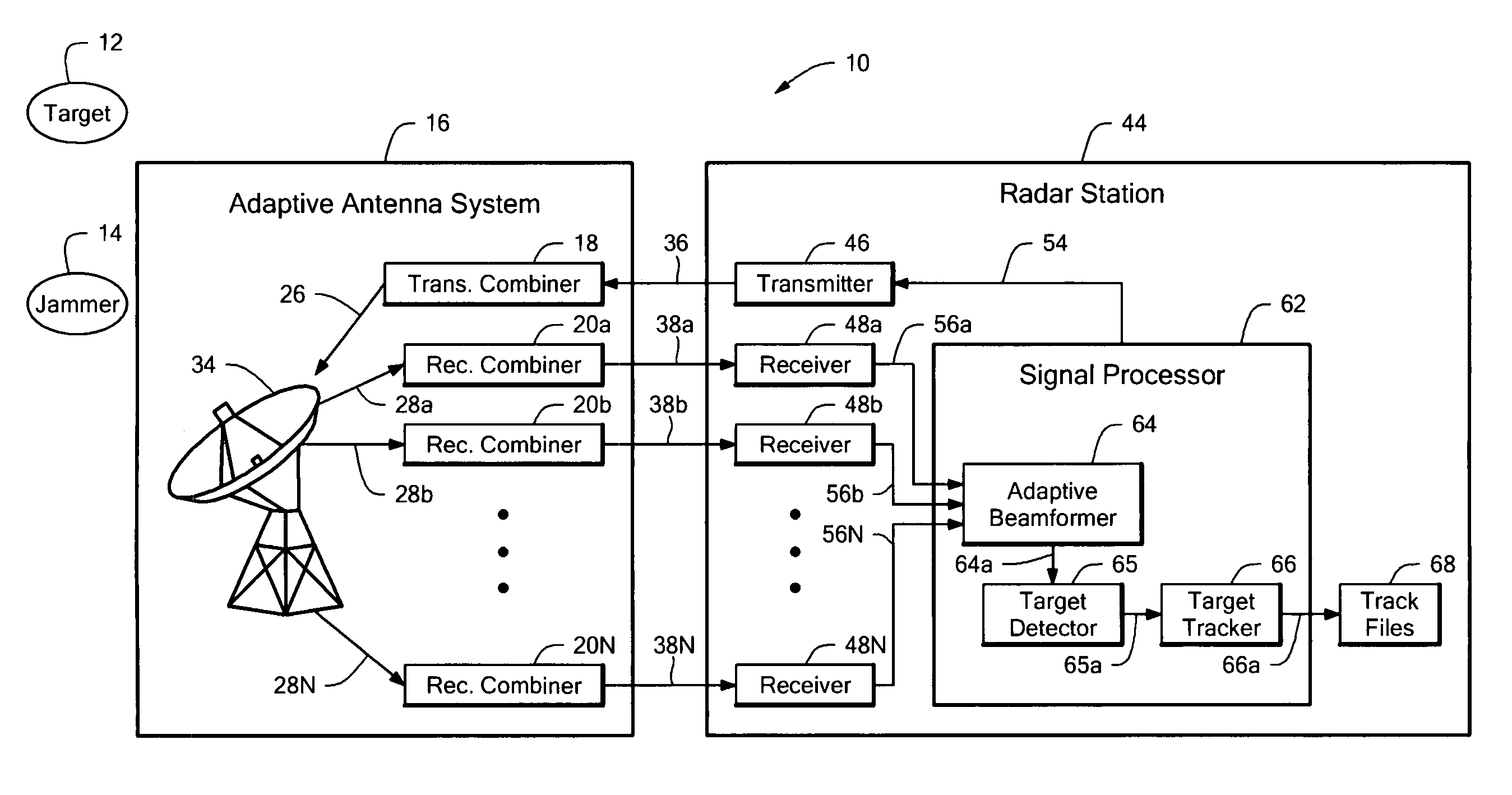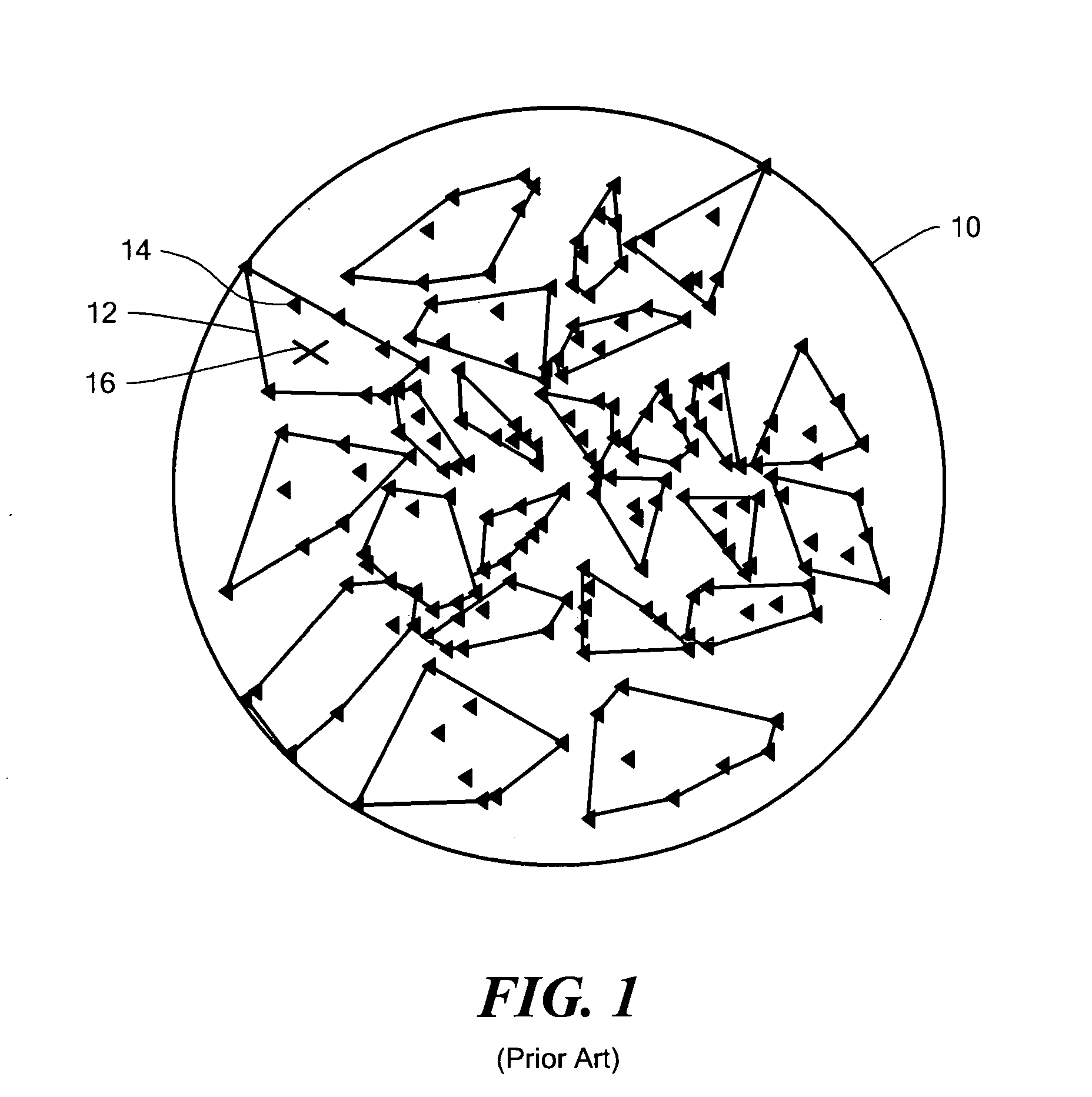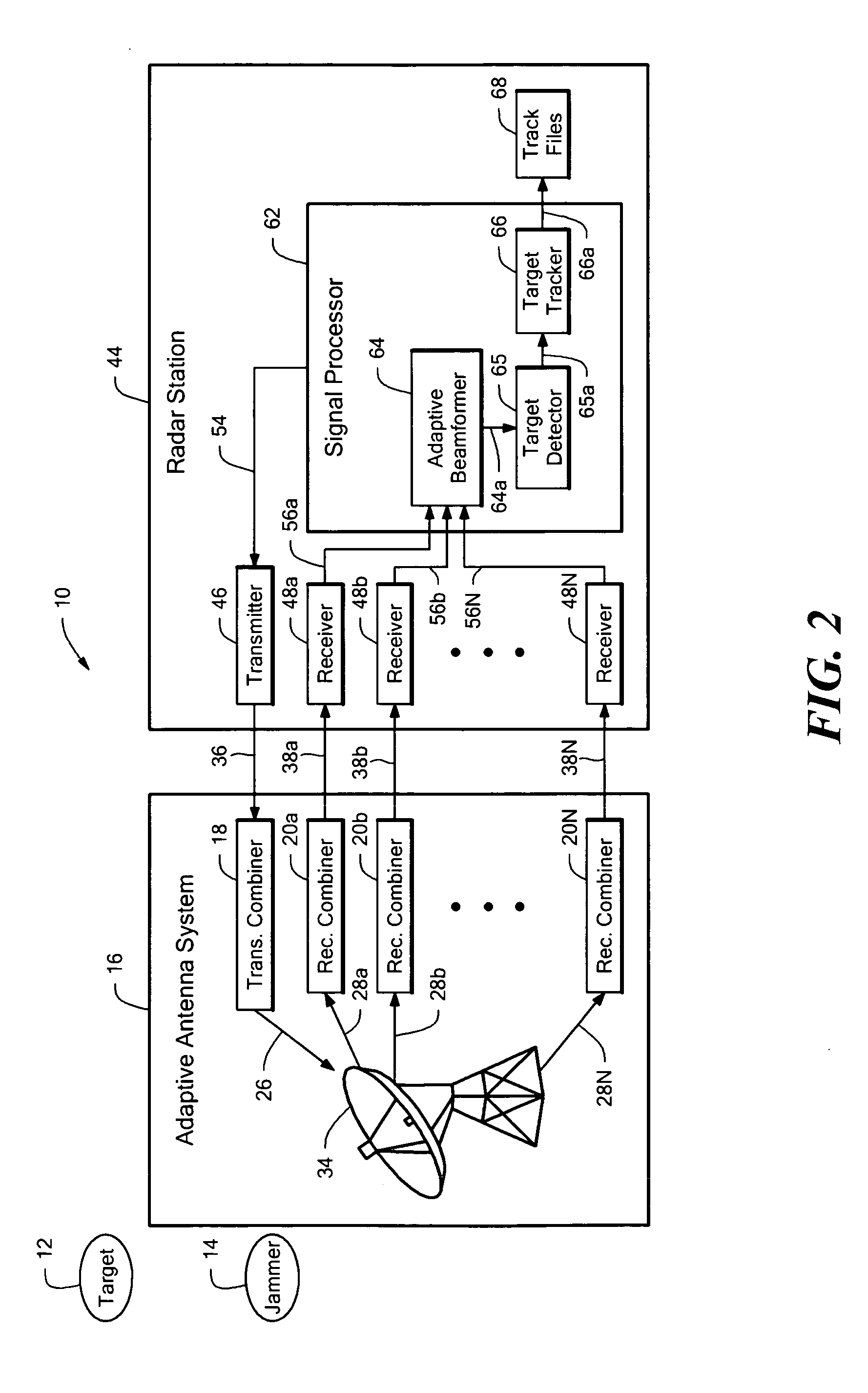Adaptive array
a radar array and adaptive technology, applied in the field of radar arrays, can solve the problems of degrading the detection and tracking performance of radar systems, and expensive radar arrays, and achieves the effects of good detection and tracking performance, easy manufacturing, and low cos
- Summary
- Abstract
- Description
- Claims
- Application Information
AI Technical Summary
Benefits of technology
Problems solved by technology
Method used
Image
Examples
Embodiment Construction
[0035] Before describing the adaptive array of the present invention, some introductory concepts and terminology are explained. As used herein, the terms “element row” and “element column” refer to a row and a column, respectively, associated with antenna array elements upon which one or more of the array elements are disposed. As used herein, the terms “subarray row” and “subarray column” refers to a row and column, respectively, associated with antenna array subarrays upon which one or more of the subarrays are disposed.
[0036] Referring to FIG. 2, an adaptive radar system 10 can be used in the presence of one or more targets, e.g., target 12, and one or more jammers, e.g., jammer 14. The adaptive radar system 10 includes an adaptive antenna system 16 coupled to a radar station 44. The adaptive antenna system 16 includes an adaptive antenna array 34 having subarrays (not shown). Each of the subarrays has elements (not shown) providing element outputs, for example, element outputs ...
PUM
 Login to View More
Login to View More Abstract
Description
Claims
Application Information
 Login to View More
Login to View More - R&D
- Intellectual Property
- Life Sciences
- Materials
- Tech Scout
- Unparalleled Data Quality
- Higher Quality Content
- 60% Fewer Hallucinations
Browse by: Latest US Patents, China's latest patents, Technical Efficacy Thesaurus, Application Domain, Technology Topic, Popular Technical Reports.
© 2025 PatSnap. All rights reserved.Legal|Privacy policy|Modern Slavery Act Transparency Statement|Sitemap|About US| Contact US: help@patsnap.com



